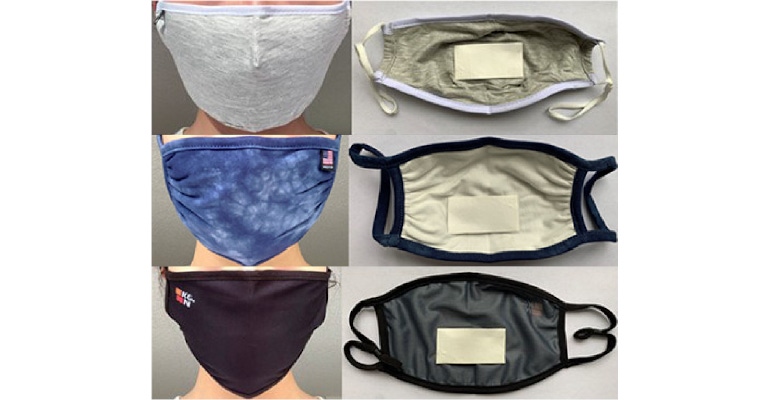Smart Mask Monitors Coughs to Identify Disease
Soft bioelectronics utilizing breathable and stretchable antennas can monitor the wearer’s physiological status.
July 27, 2022

Engineers from the University of Missouri’s College of Engineering have developed a smart facemask capable of monitoring disease by analyzing coughs. The onset of the pandemic brought facemasks to the forefront of the battle against COVID-19 and its spread. While mask wearing is believed to have helped curb its spread, it’s still challenging to identify those carrying the virus and those who may be susceptible. To that end, engineers have turned to developing soft bioelectronics that can monitor the wearer’s physiological status based on the person’s cough.
“The smart mask is integrated with judiciously designed, breathable, and stretchable antennas, which can detect cough and mask wearing,” state lead engineers in a recent interview with Design News MD+DI's sister publication. “In particular, coughing and not wearing a mask or wearing a mask improperly can change the distance between the smart mask and the human face, which will affect the corresponding resonant echo signals of mask-integrated antennas. When the distance between the mask-integrated antenna and the human face change, the recorded signal will change accordingly. Thus, we can use the smart mask to monitor the mask-wearing.”
The secret to detection lies in the soft, flexible bioelectronics integrated into the mask, which was developed using laser-assisted manufacturing (LSM), a method that’s been widely used over the last decade. In this case, the engineers laser-scribed metallic conductive, photoactive transition metal oxide (molybdenum dioxide) onto soft elastomers coated with molybdenum chloride precursors under ambient conditions. The material offers high electrical conductivity, chemical stability, and biocompatibility, even with magnetic resonance imaging. Moreover, LSM can be made on various substrates, including polymers, glass, and hair.
When incorporated into a facial mask, the bioelectronics function by detecting the distance between the integrated antenna and the wearer’s face, which changes the signal based on the cough intensity and frequency. This also can be used to determine whether the mask is being worn properly to maintain its effectiveness. “The resonant echo signals of the mask-integrated antenna will be affected during coughing due to the change between the mask and the human face,” said the engineers. The mask works in conjunction with a smartphone, which collects the relevant data and sends the information to medical professionals who can monitor the potential spread of the virus.
Regarding degradation of the sensors and the substrate materials over time, the engineers state that while the sensors can be reused, current tests show that they only last for about a day. Still, more testing will be carried out to refine the design. Beyond smart masks, the engineers state their LSM-based bioelectronics can be integrated into soft actuators to build light-driven reconfigurable three-dimensional architectures, reshapable airflow sensors, and robotic worms with bioelectronic sensors. They could also be used to monitor a user’s breathing patterns to diagnose other diseases, including sleep apnea, and to monitor other biometrics, including real-time vital signs.
About the Author(s)
You May Also Like



.png?width=300&auto=webp&quality=80&disable=upscale)
